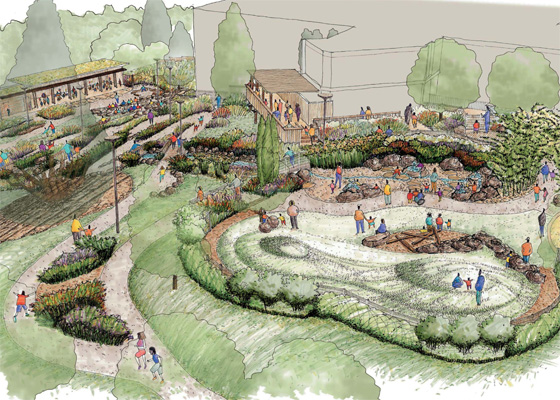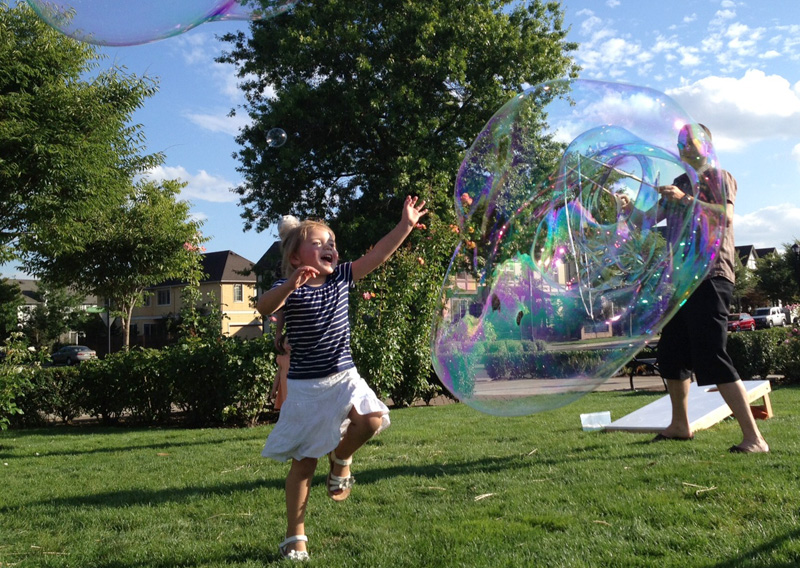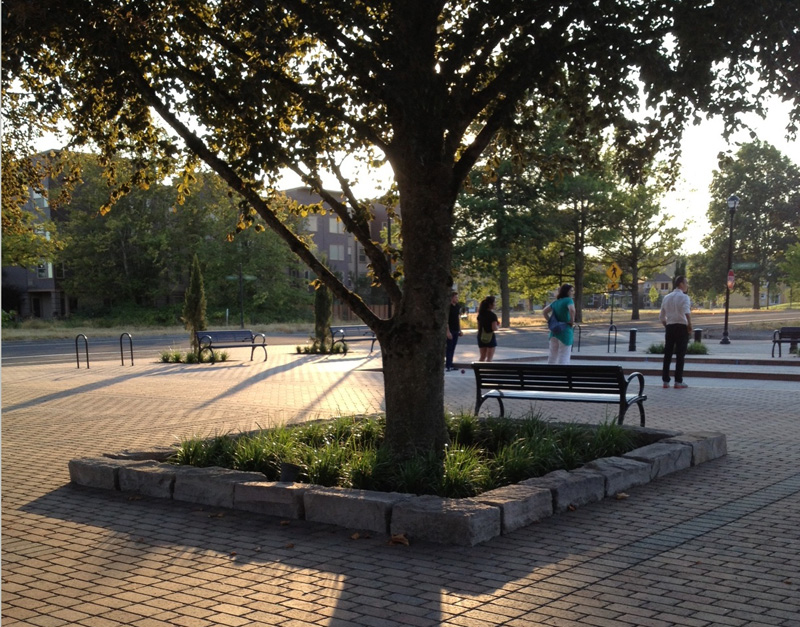Mayer/Reed congratulates Michael Abbate for his election to the 2013 Class of Fellows for the American Society of Landscape Architects. Mike was inducted on Monday, Nov. 18 at the annual meeting held in Boston, MA. As Director of Portland Parks and Recreation, he is an accomplished landscape architect whose work has encompassed both public and private sectors. We truly appreciate Mike’s special insights into the importance of public spaces and the value of design.
“Think Like a Kid Again” AFO Dinner at the Portland Children’s Museum

On August 7, members of the community, Portland Children’s Museum and consulting/construction team gathered to “think like a kid again,” while raising money for the Architecture Foundation of Oregon (AFO). Mayer/Reed, Hennebery Eddy Architects and Andersen Construction hosted a picnic and hardhat tour of the new Outdoor Adventure underway at the museum. Sponsored as part of the Dinner with an Architect program, the event contributed to AFO’s mission to create awareness of our designed environments.

Mayer/Reed’s design for the Outdoor Adventure was inspired by Richard Louv’s book, Last Child in the Woods. It will reconnect children and their families with nature and learning through active, engaging, outdoor experiences. The wooded hillside will feature a rocky streambed, splash puddles, bridges, trails, sand pit, hide-outs, plant thickets and hut-building areas for kids to explore. Hennebery Eddy Architects’ timber shelter provides a flexible location for special events, camp-outs and art projects.
Thank you to the Portland Children’s Museum, donors and skilled craftsman working on behalf of the project. We look forward to its opening on Earth Day, 2014!
Summer Picnic: Sofia Park at Villebois

What is one of our favorite things to do? Enjoy the spaces we design.
This year we converged on Sofia Park in Wilsonville, Oregon for our annual office summer party. Sofia Park is one of the three parks Mayer/Reed planned and designed in Villebois, a 540-acre mixed-use community in Wilsonville, OR. The warm summer evening was perfect for our growing Mayer/Reed families to enjoy a picnic and laughs over lawn games and giant bubbles. The kids explored the playground and climbed big boulders and trees in the rocky stormwater swale. We ended our evening with a stroll up the promenade to the town center where we played a few games of bocce ball at the recently completed piazza.
Parks and public spaces integrated into developments are integral to creating a sense of community. Meeting neighbors and forming life long friendships are important traditions of neighborhood parks. These spaces connect us and create shared meaning. It was a great to see these connections taking root and the parks filled with activities.

Presentation at Penn State: Artful Rainwater Design Symposium

On April 10th I had the privilege to participate in a one-day symposium on Opportunities and Challenges in Artful Rainwater Design hosted by Penn State’s Landscape Architecture department. Experts from across the country who practice in this specialized area of design came together for eleven sequential “TED talk style” presentations. My presentation, “Rivers and Rain Gardens” discussed a chronology of our firm’s stormwater projects from early work in the mid-1980s with bioswales and detention ponds, to recently completed work at Bud Clark Commons and a terraced rain garden beneath the Darlene Hooley Pedestrian Bridge over I-5 in South Waterfront.
After seeing the presentations of others and conversing with my colleagues in a subsequent Professionals Round Table, I came away feeling appreciative that we who practice in the Northwest have been able to make significant contributions to the “state of the art” and science of green infrastructure. I also felt convinced that we, as landscape architects, need to strongly advocate for the design of stormwater systems as an integral part of our practices, no matter where the project is located or what discipline is leading the team. We are uniquely trained to consider all of the multiple benefits of green infrastructure, from its ecological functions, educational value, economics and aesthetics.
